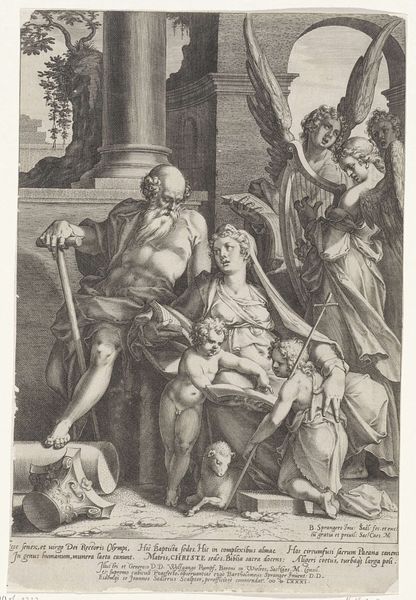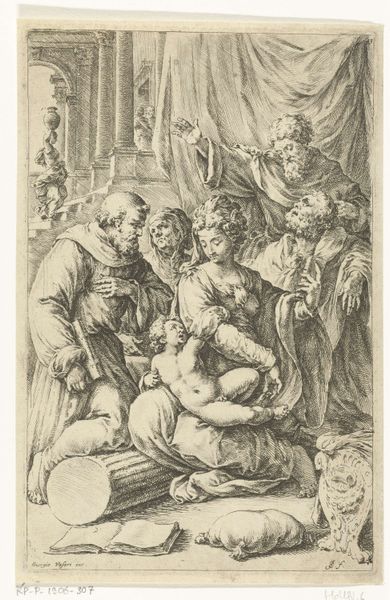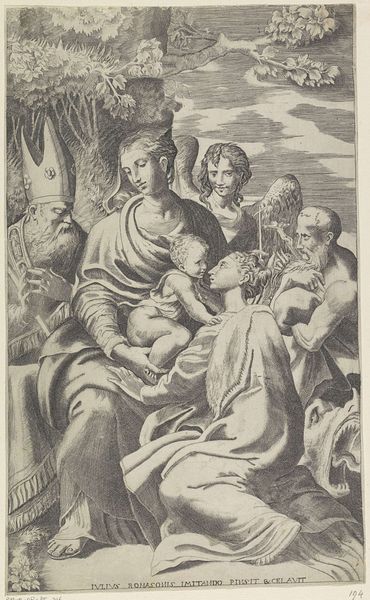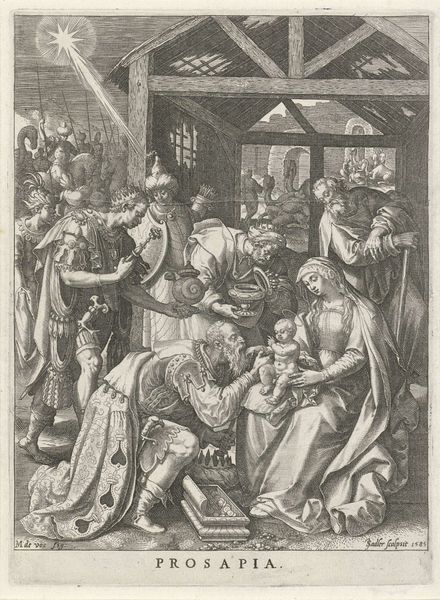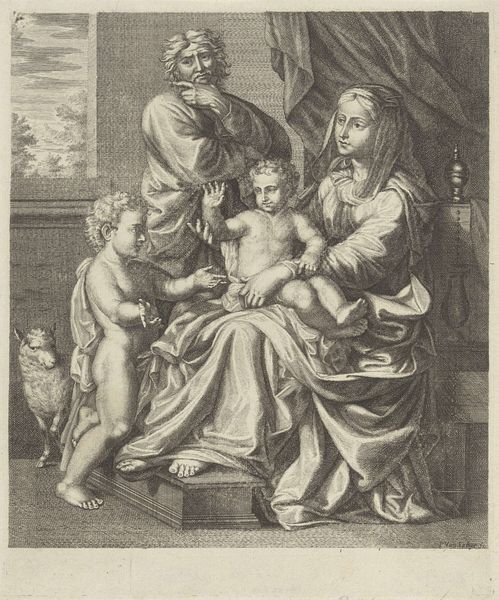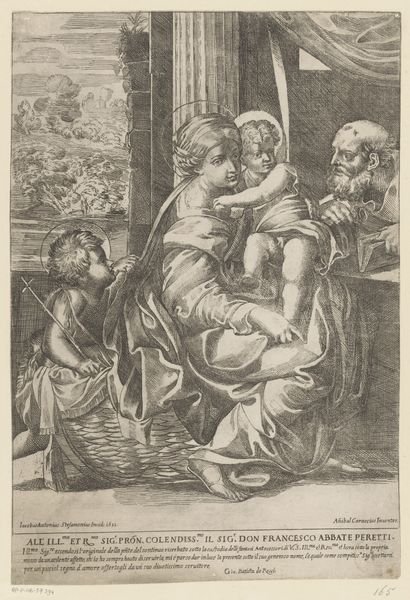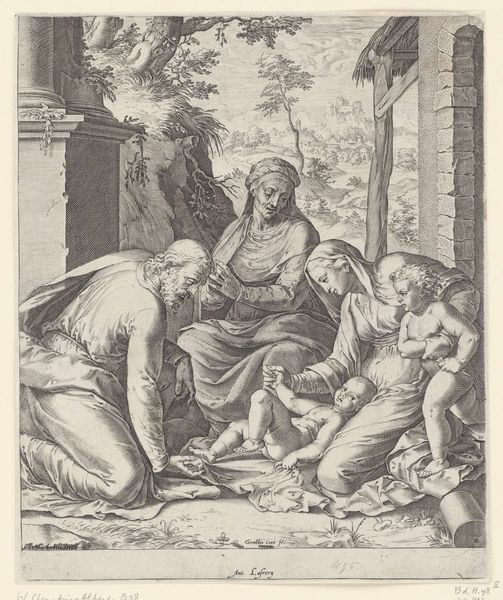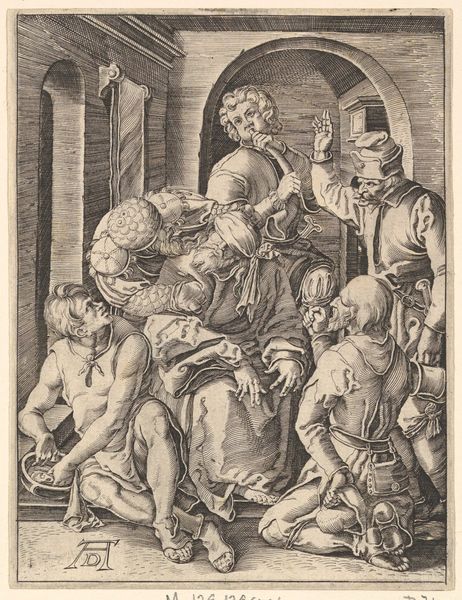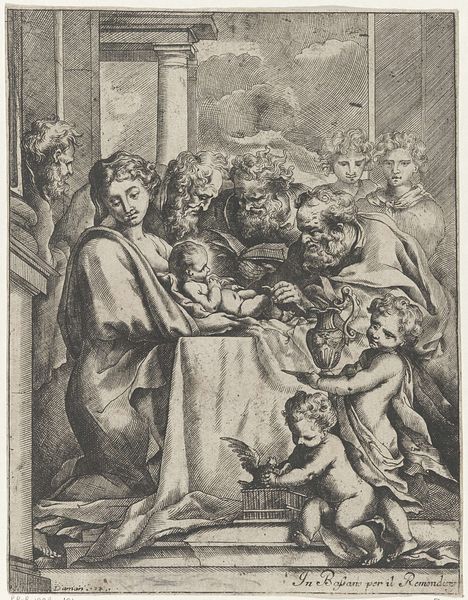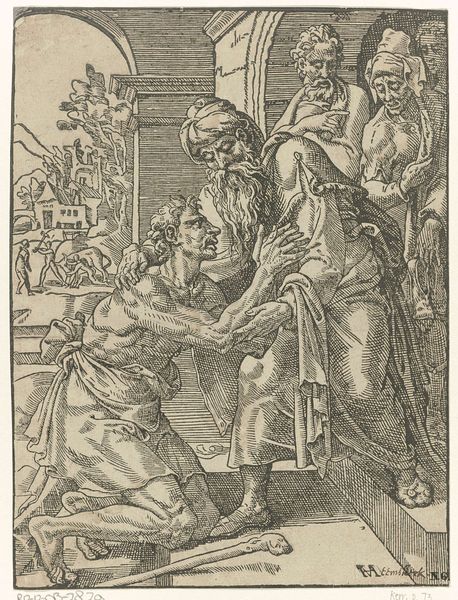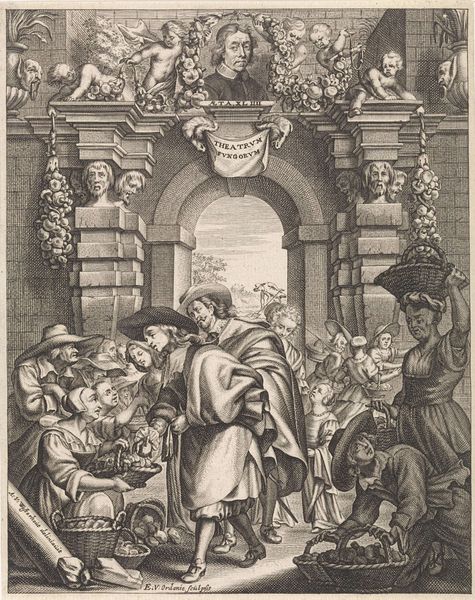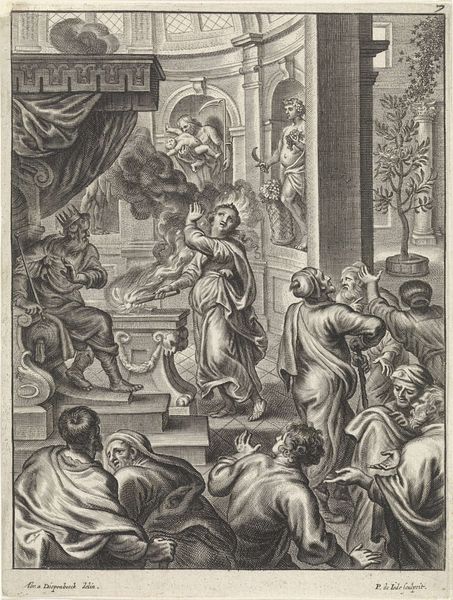
print, engraving
#
portrait
# print
#
pencil sketch
#
charcoal drawing
#
mannerism
#
pencil drawing
#
group-portraits
#
pen-ink sketch
#
portrait drawing
#
history-painting
#
italian-renaissance
#
engraving
Dimensions: height 222 mm, width 172 mm
Copyright: Rijks Museum: Open Domain
Curator: This print, dating from 1583, presents "The Holy Family with Saint Anne and John the Baptist." It’s an engraving by Pieter Perret, who worked primarily in Rome and Spain. Editor: It's immediately striking – that almost tangible sense of tenderness and intimacy. Even through the fine lines of the engraving, you feel the connection between the figures. Curator: Absolutely. Perret was operating in a nexus of artistic exchange. Consider how this image likely circulated: prints such as this democratized art, disseminating religious iconography to a broader audience than could afford paintings. Editor: And the arrangement! The central image of Mary holding Jesus mirrors countless depictions, but here, including Anne and John shifts the focus slightly. There's an emphasis on lineage, on prophecy. John’s presence subtly foreshadows the future, casting a faint shadow. Curator: It's fascinating how these visual cues operated within the social fabric. Images were never neutral. They could be used to consolidate religious authority, or to encourage personal devotion. Look how meticulously Perret renders the architectural details, hinting at the importance of location in shaping beliefs and behaviors. Editor: That draped fabric and architectural background serve a specific purpose. The drape has an inviting affect. Also the column on the side of the print adds to the holy presence portrayed through the image. You also have to consider the symbol of motherhood. Curator: Indeed. These prints acted as vehicles for the widespread transmission of religious values within the public domain, effectively embedding those ideals into daily life. The Roman context and its history add a unique flavor. Editor: Looking closely, that infant John gazes so intently at Jesus. It underscores the deep bond between them. There's a sense of shared destiny already unfolding, wouldn’t you say? I keep circling back to those children. Curator: I concur. The very act of creating and distributing these engravings was imbued with socio-political power, playing a pivotal role in shaping people's beliefs and social mores of the era. Editor: Reflecting on this image, it reveals how symbols evolve, how personal narratives are woven into larger religious tapestries. I notice there is the lamp on the ground which may have a meaning with the figures presented in the art. Curator: It's truly a testament to how artists utilized their craft to engage with, and indeed influence, their contemporary world. By observing a picture, like this one, there may be symbols behind certain presentations.
Comments
No comments
Be the first to comment and join the conversation on the ultimate creative platform.
